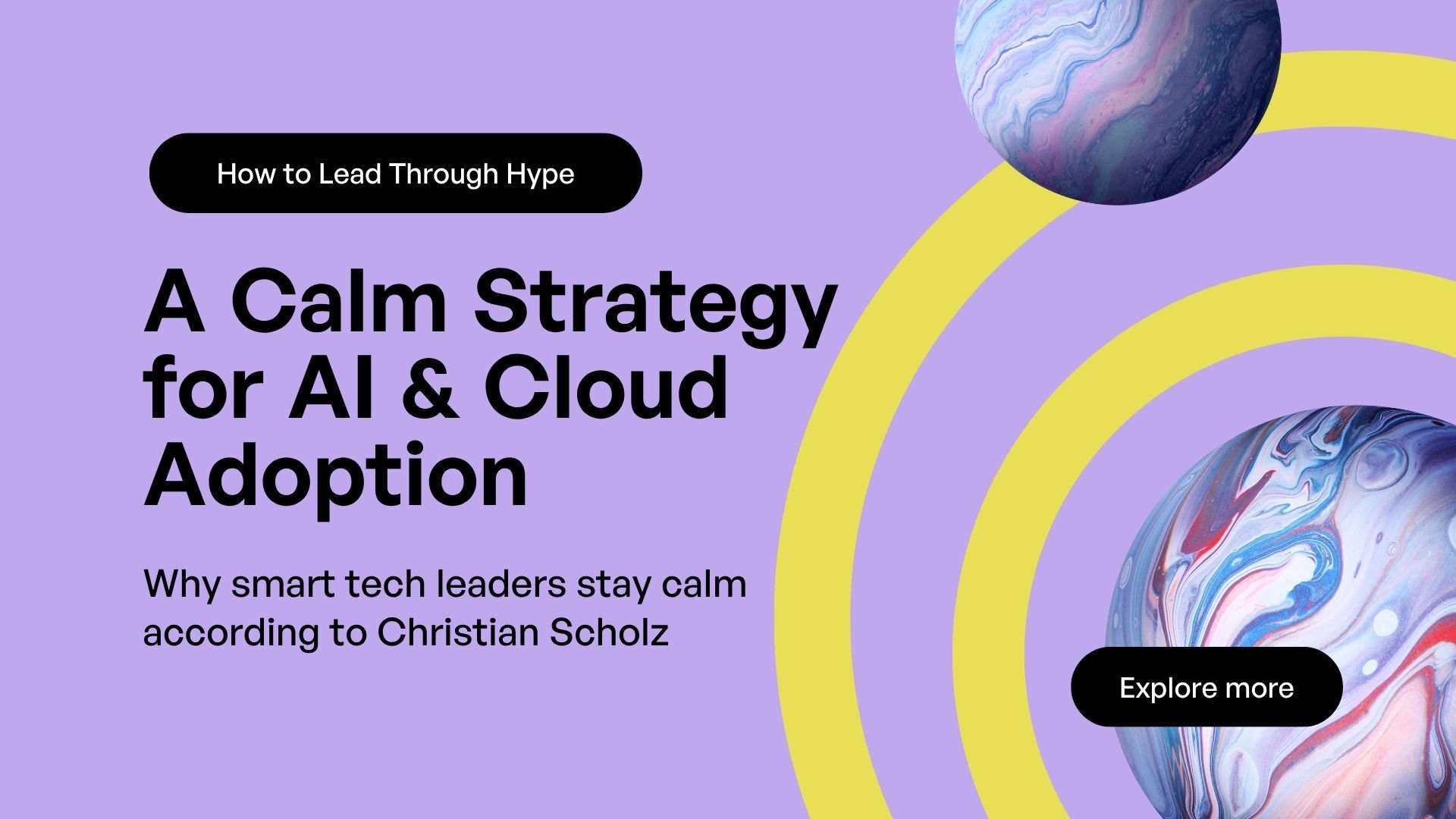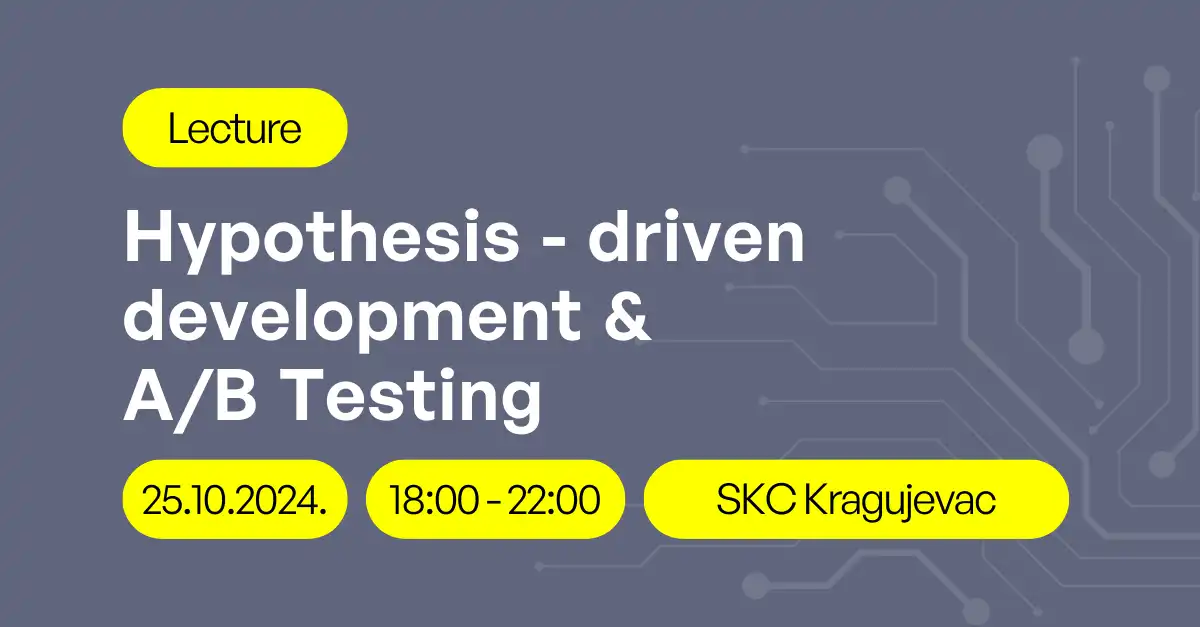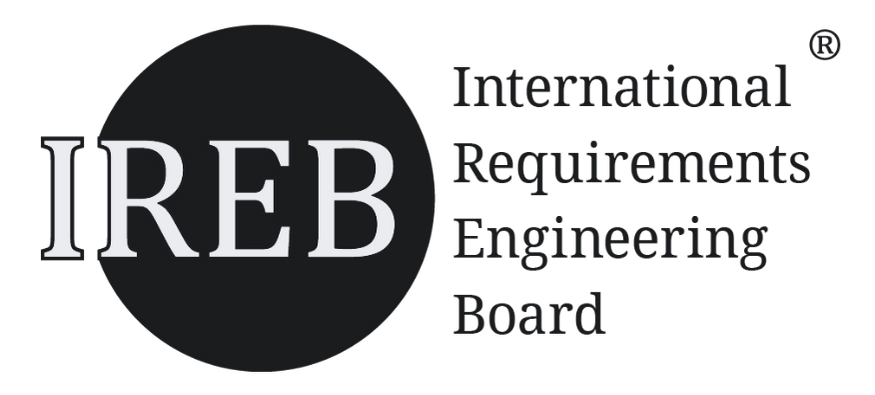It starts with a headline. A boardroom question. A competitor announcement. Suddenly, every organisation feels the need to "do something with AI" or "move faster to the cloud."
But Christian Scholz, VP Cloud Business at Arvato Systems, ex Lead Architect of Google Wallet, warns against the default reaction: rushing into tech adoption without a clear strategic foundation. With three decades of experience guiding large-scale transformation, his message is refreshingly simple: Stay calm. Align your strategy. Then move.
This article explores how to lead through hype with intention, clarity, and outcomes that actually matter.
Hype Cycles Are Loud. Strategy Is Quiet.
When AI exploded into the mainstream with ChatGPT, many companies rushed to build proofs of concept. Pressure came from media, peers, even internal teams.
But as Christian explains,

"None of these pilots have really generated revenue yet. Even OpenAI and Microsoft are still investing more than they earn from it."
That doesn’t mean the technology lacks potential. It means impact takes time. And most importantly, value doesn’t come from being first—it comes from being aligned.
Why Acting Too Fast Creates Long-Term Drag
Rushing into emerging tech often leads to:
-
Half-baked pilots that never make it to production.
-
Fragmented tooling, duplicated efforts, unclear ownership.
-
Lost credibility with leadership when results don’t land.
-
Teams burning energy on experimentation instead of solving business problems.
Christian points out that most companies are reacting to outside pressure, not internal clarity. The result is motion without direction.
Calm Doesn’t Mean Passive
Staying calm isn’t about doing nothing. It’s about doing the right things, in the right order.
Christian's approach starts with three key questions:
-
What is our long-term goal?
-
Does this technology help us move toward it?
-
Can we absorb the risks and cost if it doesn’t work?
These questions shift the conversation from hype to business value.
Set the Pace with a Vision You Can Communicate
A steady path requires more than a technical roadmap. It requires a North Star that your people understand and believe in.
Christian recommends something concrete and time-bound, like: "We want to become one of the top three Microsoft partners in Germany within five years."
It gives teams something to aim for. And it creates a filter for evaluating new opportunities: Does this get us closer to the vision, or just keep us busy?
Prove Value Early, But Don't Fake Momentum
Pilot projects have their place, but they must be tied to strategy.
The goal isn't to "try out AI" or "experiment with cloud." The goal is to validate whether the tech helps you deliver better outcomes.
Use proof-of-concepts to:
-
Learn fast, with a clear hypothesis.
-
Test against a known business problem.
-
Involve the people who will scale it later.
Don't use them to create the illusion of progress. That’s how you end up with 10 disconnected projects and no clear ROI.
Lead Through Pressure by Being Transparent
Hype thrives in silence. When teams don’t understand what matters, they default to what’s loudest.
Christian’s leadership approach is grounded in honesty:
-
Share the risks. "We have five risks. Here they are."
-
Admit uncertainty. "This might not work, but we believe it’s worth exploring."
-
Let others opt in or out. "If you don’t believe in this direction, step back."
That kind of clarity builds trust. It also builds resilience when things get tough, because people know why they’re doing the work.
Final Thought: Fast Alone Isn’t Enough
In a world that moves faster every week, it’s tempting to sprint. But as Christian reminds us, fast without direction just burns fuel.
Calm leadership is a competitive advantage. Because when the noise rises, the companies with a clear goal, real focus, and a trusted team will still be moving in the right direction.

















